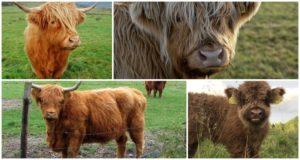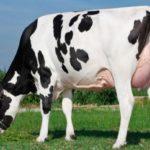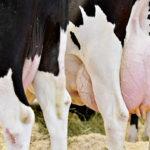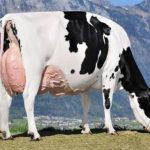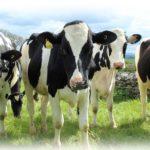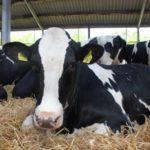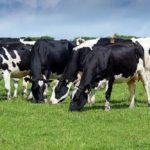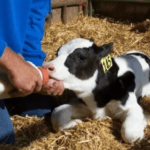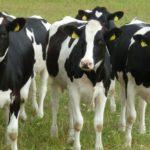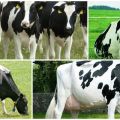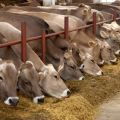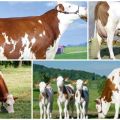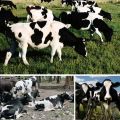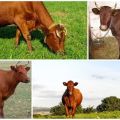Description and characteristics of Holstein-Friesian cows, their content
The Holstein-Friesian breed is highly productive and is the most common in the United States and Canada within its direction. Holstein-Friesian cows are bred primarily for milk production. The second direction is meat, but on condition that the animals are provided with proper care, including a properly composed diet. As a result, it is possible to obtain significant volumes of quality meat.
Breeding history
This variety is obtained by crossing the Dutch and black-and-white breed. The Germanic breed was introduced in the 1st century AD. e. to Frisia, which now occupies the territories of North Holland, Friesland and Groningen. The local cows were of light color, while the imported ones were black. As a result of their reproduction, variegated calves were born, which were called Holstein-Friesian.
The starting point for active breeding of cows was the acquisition of a Dutch cow by an American named Chenery. It was he who began to carry out the first breeding work in 1852. The breed has become widespread due to its high productivity and the ability to adapt to new habitat conditions.
In Holland, cows were not improved, but in the USA and Canada special attention was paid to this. The main direction is to increase the volume of milk yield and meat products. A few years later, the Society of Breeders for the Breeding of Holstein-Friesian Cattle was created, the head of which was the aforementioned Chenery. A year later, the breed spread to twelve more states. At the same time, the breed's studbook was released.
The appearance and characteristics of the Holstein breed
The breed has striking features - both in appearance and character. The main difference is the variegated color, large size and power. Most often there is a black and white suit, less often with an admixture of red. The latter option was previously undesirable, and such cows were culled. However, later they were recognized as complying with the standard and began to breed.
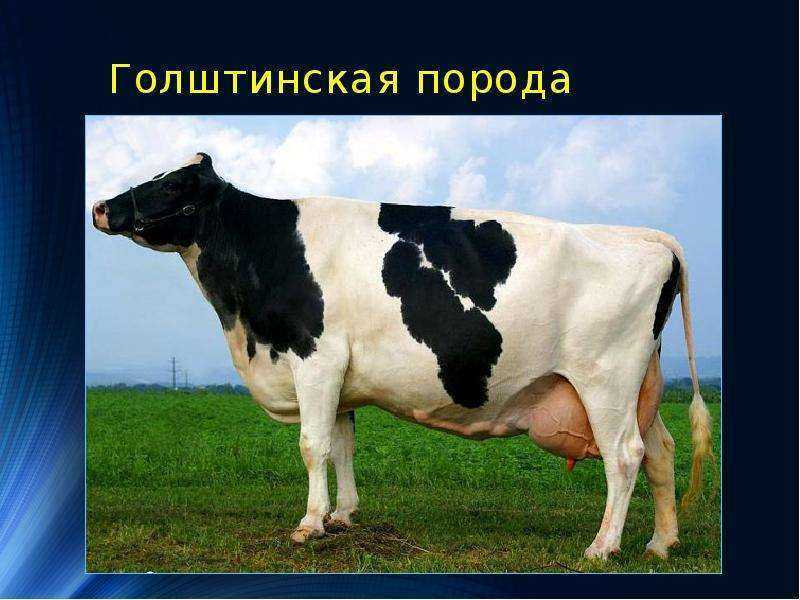
Description
The exterior of the animal is distinguished by the following features:
- Large wedge-shaped body.
- Broad sternum.
- Long limbs.
- Massive pelvis.
- Volumetric lower back.
- Curved back.
- Elongated neck, elongated head (larger in males).
- Large udder with small nipples.
- The color is black and white or red and white (in Germany).
- Lack of horns.
- The presence of a small hump on the back.
- Height - 145 centimeters for a cow, 160 centimeters for a bull.
- The male weighs about 900 kilograms (maximum 1.5 tons), the females, on average, weigh 800 kilograms.
- Good health (if conditions are correct).
- Whimsical food (requires a well-composed diet).
The breed does not differ in endurance - animals do not feel well in hot weather. In such conditions, milk yield decreases. Thanks to breeding work, it was possible to achieve an increase in endurance. Improving the qualities of the breed continues to this day. Animals are demanding in terms of keeping conditions: regular ventilation and ventilation, thorough cleaning of the premises.
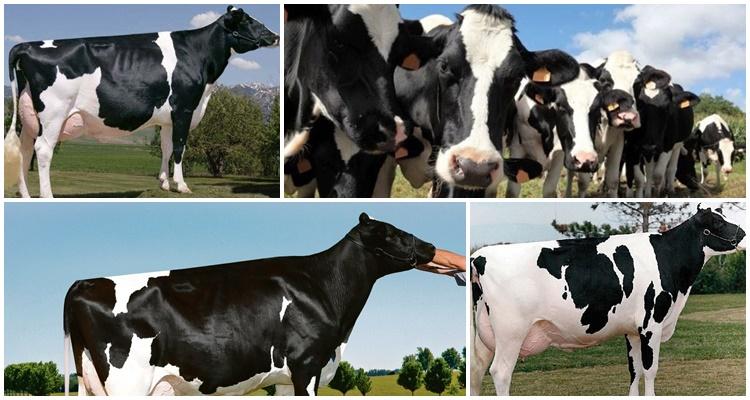
The breed is capricious. For example, under the influence of stress or if the rules of care are not followed, cows may lose milk. If the animal is dissatisfied with something, then it may well overturn the container with water or food. The most important characteristic of any breed is its productivity. Both meat and milk are obtained from the Holstein-Friesian, therefore the productivity indicator is divided into two types.
Especially good results in milk yield, for which Holsteins are especially appreciated.
Milk productivity
Milk yield reaches 20 liters per day with proper care and a balanced diet. The maximum rate is 45 liters of milk per day. They receive up to 7.3 thousand liters of milk per year. The fat content of the product is 3.8%.
The amount of milk depends on several factors:
- cow nutrition;
- age;
- the number of births (very young heifers show low results, since their udders are underdeveloped, while good performance is kept until the sixth calving);
- feeding period;
- habitat;
- genetics;
- seasonality;
- coat color (red-and-white cows give less milk than their black-and-white counterparts).
Meat productivity
Young individuals up to a year grow up to 65-70% of the mass of adult cows. By the age of two, bulls weigh about 500 kilograms (with a properly formulated diet). The weight of an adult bull varies from 850 to 900 kg.
Disadvantages and advantages
Features of maintenance and care
In order for the cows to feel comfortable, not sick and show good results in milk yield, they need to provide normal housing conditions:
- Regular and thorough cleaning of the premises where individuals are kept.
- The presence of ventilation and air conditioning.
- Drafts are not allowed.
- Animals should not be stressed.
- The recommended type of content is loose-boxed.
- Proper care of the newborn. Careful adherence to hygiene (immunity is weak, so the body is susceptible to infections).
- The first two weeks, the calves are adapted to the external conditions. The place where the birth took place must be treated with disinfectants.
Drawing up a diet
Depending on the age of the animal, the type of food is also different:
- monthly calves feed on colostrum;
- at two months, the young eat root crops, oatmeal, boiled potatoes;
- at four months, calves are transferred to hay and grain mixture;
- in six months the ration is hay, root crops, silage and concentrates.
The diet of cows during lactation includes:
- dry food (grain, bone and meat meal, concentrates);
- vegetables, silage, green grass, root crops;
- hay, straw, cake, bran, haylage (improve the digestive tract).

To improve the fat content of milk, the cows are given sunflower meal and feed. To increase milk yield, add carrots, molasses, potatoes to the menu.
Breeding
Before starting breeding, you need to equip the cows room. Its area is determined depending on the planned livestock and the availability of free space. The cowshed should be located fifteen meters from a residential building and twenty meters from water sources. A smart solution is to place the barn next to the vegetable garden to make it easier to dispose of the manure.
It is desirable that the room has an attic. The area of the barn for one individual is eighteen square meters. With a larger number of cows, six square meters per animal is enough (nine with calves).
The room should have feeders, a place for passage, a waste drain, ventilation. The walls of the barn are made of bricks. The concrete floor rises ten centimeters above the ground and is positioned at a slight angle to drain the waste. The optimum air temperature for animals is 10-15 degrees.
The Holstein breed is bred both in pure form and mixed with other colors. The bottom line is that dairy inheritance is transmitted through the male line. On a large scale, cows are bred artificially, and in a private economy, crossing occurs naturally. The average weight of calves is 38 kilograms (calves - 35).
Diseases and their treatment
The breed is distinguished by strong immunity, but if the rules of care are not followed, diseases such as:
- necrobacteriosis;
- leptospirosis.
For treatment, antibiotic therapy is prescribed. If there are drafts in the barn, animals develop mastitis. For treatment, antibiotics are also used, which are injected into the affected areas using a catheter. The Holstein-Friesian breed is famous for its productivity - both meat and dairy. Keeping these cows requires labor and financial costs, but with good care, high milk yield will make up for the costs with interest.
